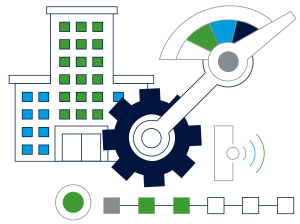In the draft act on top-up taxation of constituent entities of international and domestic groups published by the Polish Ministry of Finance in April, which implements the provisions of Council Directive (EU) 2022/2523 on the global minimum tax (Pillar 2), the legislator has provided for the introduction of a domestic top-up tax in Poland. What does this mean for Polish companies belonging to groups covered by the global minimum tax?
How does the domestic top-up tax work?
Qualified Domestic Minimum Top-up Tax (QDMTT) is a tax collection mechanism available to states implementing the Pillar 2 directive.
The essence of QDMTT is to collect the top-up tax at the state level even if the parent company of a given group is covered by the global minimum tax regulations in another country. This will apply assuming that the Polish domestic minimum tax meets the conditions provided for in Pillar 2, which will allow it to be recognised in other countries as the so-called safe harbour QDMTT.
The exemption obtained through the safe harbour status will ensure that the jurisdiction of the parent entity of the group will not apply the mechanism for levying tax on the profits of Polish companies belonging to the group.
In practice, this means that if the effective tax rate for business activities conducted in Poland is lower than 15%, there will be an obligation to pay top-up tax in Poland.
Learn more about our services
Who does the QDMTT apply to?
The taxpayers of the domestic top-up tax are to be:
- constituent entities located in Poland, belonging to an international group in which the ultimate parent company is headquartered outside Poland,
- constituent entities located in Poland, belonging to an international group in which the ultimate parent company is headquartered in Poland but the other companies are headquartered outside Poland,
- constituent entities belonging to a domestic group,
- joint venture entities, i.e. entities established by a group of two (or more) independent companies in order to implement a specific project or common goal,
- permanent establishments located in Poland.
In addition, the group to which the constituent entity belongs must meet the boundary conditions to be covered by the provisions in question, i.e. exceeding the threshold of consolidated revenues of EUR 750 million in at least two of the four tax years preceding the tax year under review.
According to preliminary estimates, there are several thousand companies operating in Poland that meet the conditions for being covered by the provisions on the domestic minimum tax.
Who will pay the domestic top-up tax and when?
The rules contained in the EU Pillar 2 directive provide for the division of QDMTT into all the group’s constituent entities operating from Poland according to the share of the qualifying income of a given taxpayer in the total qualifying income of all the constituent entities operating in Poland.
However, the regulations allow groups to designate one entity in each jurisdiction, whose task will be to calculate and pay the tax. In such a case, the remaining units will be – of course, together with the entity designated to pay – jointly and severally liable for the tax liability calculated in this way.
The implementation of QDMTT does not only mean the need to pay a new tax – it also involves further reporting obligations. Under the domestic top-up tax, taxpayers will have to file (to the relevant tax office) a return on the amount of the top-up tax due and pay the amount set out therein within 18 months following a given tax year. The exception is the filing of a return and payment of tax for the first tax year in which the group was subject to the new regulations – then this deadline has been extended to 21 months.
The implementation of QDMTT in Poland means significant changes in the way tax liabilities are calculated
To briefly sum up the information presented here, we can safely say that taxpayers who will be affected by the Polish domestic top-up tax will have to thoroughly analyse the impact of the new regulations on the entire group and properly prepare for their implementation. And that means a lot of work.
To see how much attention the changes introduced by the EU Pillar 2 directive on top-up tax require from you, we encourage you to complete the interactive Pillar 2 survey and check today whether your company will be covered by the new regulations.
If you have any questions (or need to discuss the topic in more detail), please feel free to contact our experts.








